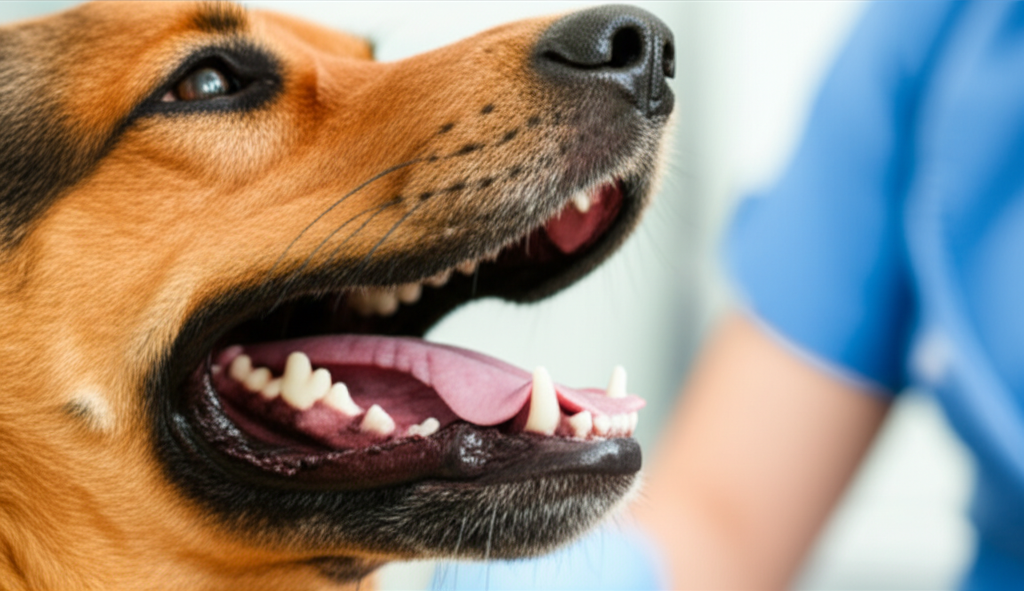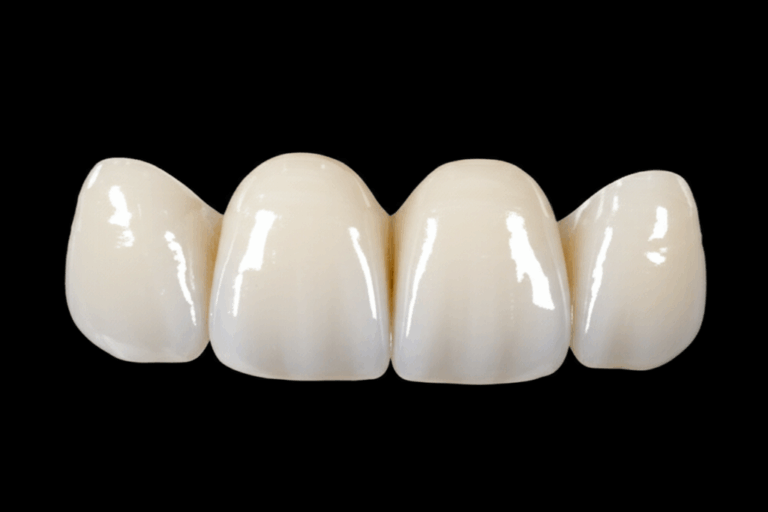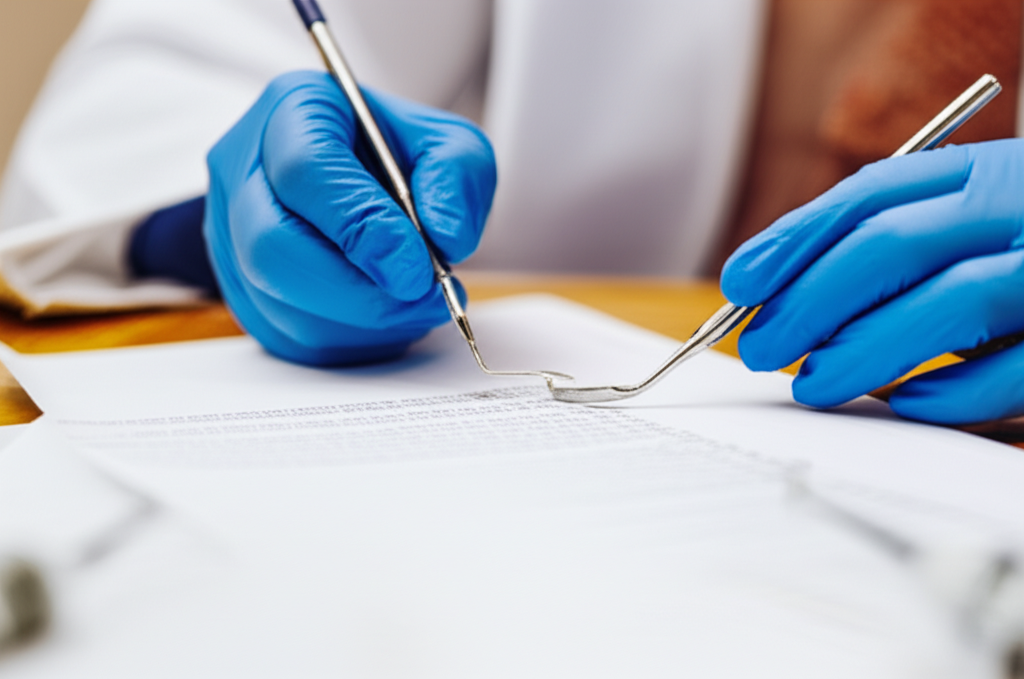
Do They Do Dog Dental Implants? The Truth About Canine Tooth Replacement
That nervous feeling when your dog loses a tooth or comes out of the vet’s office with news about mouth surgery—it happens a lot. If you’re wondering, “Do they actually put dental implants in dogs?” or if thinking about fake dog teeth makes you imagine something weird, you’re not alone. Many pet owners worry about this when their dog has tooth problems. Is this special fix even possible—or needed—for your dog’s missing tooth?
Let’s go through the facts, clear up the confusion, look at the good and bad sides, and help you decide what’s best for your dog’s mouth, health, and happiness.
In This Article
- Yes, With Special Things to Think About: Dog Dental Implants Explained
- When Are Dog Dental Implants Used? Best Dogs and Reasons
- How the Dog Dental Implant Process Works
- Price, Success, and Problems That Might Happen
- Other Options Besides Dental Implants for Dogs
- How to Find a Good Vet Dental Specialist
- What Dog Owners Should Remember
Yes, With Special Things to Think About: Dog Dental Implants Explained
What Is a Dog Dental Implant?
Think of it like this: A dental implant for a dog works a lot like it does for people. Instead of just having a gap, a tiny screw—most often made from titanium or sometimes zirconia—is put into your dog’s jaw. This acts like a strong tooth “root.” A custom-made cover goes on top, acting like a real tooth for chewing, playing, and bringing back that doggy smile.
So, do they do dental implants for dogs? Yes, but there’s a lot to think about. Implants aren’t common at most vet offices. They are tricky surgeries, only done for certain cases by special vet dentists.
Why Don’t Dogs Get Implants Like People?
You might ask, “If people get implants all the time, why not dogs?” Here’s the real answer:
- How Dogs Act: Dogs chew on all sorts of things—bones, sticks, you name it. They don’t always treat dental work gently. Keeping an implant safe usually means the owner has to help a lot.
- Is It Really Needed?: People often get implants to look better or to help with speech. In vet care, it’s all about the dog’s comfort, not how they look.
- Only Done by Experts: Only some vet dentists with special training know how to do these.
- Costs More and Is Harder: Implants cost a lot more than just pulling a tooth, and most dogs do just fine with a missing tooth or a crown.
- Not for Every Dog: Dogs need to be healthy and have a strong jaw to be able to get one.
Even with those issues, in special cases—especially for working dogs, service animals, or when an important tooth is lost—dog dental implants could be an option.
When Are Dog Dental Implants Used? Best Dogs and Reasons
Not every missing dog tooth means your dog needs an implant! Most dogs are just fine after a basic tooth pulling or repair, and don’t miss a thing.
Main Reasons for Dog Implants
Implants are usually used for:
- Replacing Just One, Really Important Tooth: Like big chewing teeth or the big canine teeth, often lost from accidents.
- Keeping the Bite Working Right: In some breeds, losing a main tooth can mess up how the mouth fits together, which can cause problems later.
- Stopping Jawbone Shrinking: After a tooth is pulled, the bone in that spot can get smaller or weaker over time.
- Need for Working Dogs: Police dogs, working dogs, and show dogs might need a replacement tooth to do their job.
Who Makes a Good Candidate?
Great implant candidates usually:
- Are healthy overall (no bad organ problems).
- Have a strong, healthy jawbone.
- Don’t have gum disease or mouth infections.
- Can get their teeth cleaned at home (like with daily brushing).
- Are calm enough to follow all the rules after surgery.
Dogs with ongoing sickness, infection, or weak jaws probably shouldn’t get an implant.
How the Dog Dental Implant Process Works
If you think this is a quick, simple surgery, think again. Dog dental implants take a while—they’re a bit of a journey. Here’s what normally happens:
First Visit and Checking Things
- Full Mouth Check: A vet dentist will look at your dog’s entire mouth.
- X-rays or CT Scans: To see how the bone looks and to check for hidden problems.
- Talk About What’s Best: The vet will go over every choice, like pulling the tooth, crowns, or root canals.
Step 1: Putting in the Implant
- General Anesthesia: Your dog will sleep through the whole thing.
- Surgery: The vet carefully drills a small hole in the jaw and puts in the implant screw.
- Healing Time: The implant needs 3–6 months to really “stick” to the bone. During this time, your dog will need soft food and extra care.
Step 2: Placing the Crown
- Second Surgery: Another round of anesthesia to put the piece and the fake tooth (the crown) onto the implant.
- Crown Material: Usually super-strong ceramics or metal—because dogs use their teeth a lot!
Care After Surgery
- Pain Control: The vet gives pain medicine and probably antibiotics for safety.
- Food and Play: Only soft foods, no rough play or chewing on stuff until healed.
- Home Care: Owners might need to brush, wipe, or rinse the area every day.
- Regular Vet Visits: You’ll need to come back every now and then for checkups and cleaning.
This is really a team effort between you and the vet—your dog depends on both!
Price, Success, and Problems That Might Happen
Let’s get real about cost and risks.
How Much Do Dog Dental Implants Cost?
Dog dental implants are at the top when it comes to price. You’ll probably see:
- Per Implant: Usually, $2,000–$6,000 or more. The price depends on:
- Where you live and the vet’s skill
- How many implants you need
- If special scans are needed
- What the tooth is made of
- More Costs: Things like CT scans, anesthesia, post-surgery visits, and dealing with problems can add more to the bill.
- Pet Insurance: Most plans don’t pay for this, unless it’s an accident and your plan covers that. It’s smart to ask your insurance company.
Success Rates and How Long They Last
- Success Rates: Pretty high if the dog is a good pick—about 80–90% last for a long time.
- Main Factors: Good dog health, careful vet work, and most of all—owners who clean and care for the implant.
- How Long?: With good care, implants can last for your dog’s whole life, but they can break or fail if not cared for.
Common Problems
There’s always a risk with surgery, and these come with their own issues:
- Risks of Anesthesia: Pre-surgery testing helps make it safer, but older or sick dogs have a bigger chance of side effects.
- Infection: Dogs can get infections or gum problems around the implant, just like people.
- Implant Doesn’t Work: Sometimes the bone and implant don’t join right, or it can come loose later.
- Breakage: Dogs that chew hard stuff could damage or break the tooth or implant.
- Other Problems: The rare jaw fracture, nerve damage, or pain can happen, especially if care after surgery isn’t right.
Is it worth it? For some dogs, yes. For most, pulling the tooth or doing a root canal or crown is easier and works well.
Other Options Besides Dental Implants for Dogs
If all this sounds scary or expensive, don’t worry. Most dogs don’t need implants—even with missing teeth, they still eat, play, and live well.
Tooth Pulling
- The Common Fix: For rotten, broken, or sore teeth, pulling the tooth is still the most common and safe way.
- Good Points: Quick pain relief and stops bad infection.
- Bad Points: Your dog loses a tooth to chew with or might look a little different if it’s in front.
- Reality: Most dogs get used to it fast, if they eat the right food and have clean mouths.
Crowns and Root Canals
- When to Pick This: If the tooth is cracked but still alive, a crown or root canal can save it.
- Upside: Saves jaw health and works well without big surgery.
- Downside: Not right for all injuries or infections.
No Treatment (Sometimes Okay)
- When Is a Gap Fine? If the lost tooth isn’t needed for eating, doesn’t hurt, and your vet is okay with it, you sometimes don’t have to do anything.
- Problems If You Don’t Fix It: If there’s infection or loose roots, it could get worse—so always check with your vet!
Bridges (Not Done Much)
- A Rare Fix: Sometimes used for looks or special problems, but it’s even harder to do than implants and isn’t very strong.
Tip: Ask for help from a dentist or a board-certified veterinary dentist before deciding for your dog.
How to Find a Good Vet Dental Specialist
Dog dental implants aren’t something you want anyone to “just try.” Training and experience really matter.
- Look for Experts: Diplomates of the American Veterinary Dental College (AVDC) have special training for this.
- Ask Questions:
- Could my dog really use an implant, or is there something better?
- How many of these has the vet done?
- What do I need to do after surgery?
- What happens if something goes wrong?
- Where to Find Help: Check out the AVDC website, local animal hospitals, or specialty vet clinics.
Make sure the vet uses good tech like CT scans, digital dental labs, and a super clean area for the best results. A skilled dental ceramics lab may make the crowns, too.
What Dog Owners Should Remember
Here are the things to keep in mind:
- Yes, dog dental implants are real—but they’re tough, cost a lot, and only for special cases as decided by a vet dentist.
- Most dogs do NOT need an implant after losing a tooth. Pulling, root canals, and crowns are easier and cheaper ways to help your dog stay healthy.
- Good Picks: Healthy, grown-up dogs who lose an important tooth, have strong jaws, and owners who will take care of the tooth. For these dogs, it can really help.
- It Takes Time: Expect months, not days, and need money, patience, and healing.
- Risks and Rewards: Good results happen if you pick the right vet and take care, but problems can still happen.
- Find the Right Vet: Always choose someone with the best training and who uses modern tools.
What to Do Next:
Remember, your dog’s happiness and comfort is the most important—not a perfect smile. Healthy teeth mean more playtime, more fun, and a longer life together. Whatever you pick, you’re looking out for your dog—and that’s something worth smiling about.
Where to Learn More:
- American Veterinary Dental College (AVDC)
- Journal of Veterinary Dentistry
- Veterinary Oral Health Council (VOHC)
If you have more questions or your dog’s mouth needs a new look, visit a vet dentist or check out new dental solutions and materials at a trusted implant dental laboratory. Your dog’s comfort is worth looking into and making a smart choice.








